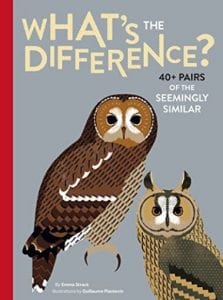I am the sort of person that likes to get their travel experiences vicariously. I do not need to find mice in my rucksack, worry about being impaled on a cow’s horns or try and find a lift halfway back across Africa in time to catch a flight. I am always very early for my flights!
It’s just as well then that Simon Chapman, a real-life explorer, author and illustrator, has created a whole series of Expedition Diaries from the Australian Outback to the Indian Lowlands with mountains and rainforests in between for me to experience the places. The latest book, African Savannah, is about Simon’s journey through Botswana, into the wetlands of the Okvango Delta and on to the semi-desert of Namibia.
The diary opens with an overview of the expedition, a kit list, information about the Kalahari Basin and a map showing an outline of the trip. The information is placed on the page in snippets with post-its, maps and photos making the layout engaging and non-threatening to those who have not yet developed the stamina to read dense prose! Also included are sketches and water-colour paintings of animals and places seen along the way.
The diary follows a day by day account describing the highs and lows in a mix of fonts: handwritten, normal publishing font and typewriter like font, although I am not sure that Chapman would use a typewriter. It does, however, have the effect of distinguishing different types of text on the page. We get a sense of how Chapman feels about his adventures through the use of larger fonts and descriptions of emotions. Let’s face it. Who would ever forget a cheetah licking the salt off their legs?
Every school library should have a few books from this series in their library – if not all of them – mostly to be read by KS2 children. This book and series would also make a good book for teaching writing particularly to Upper KS2 children. I say Upper KS2 because of the different voices used in the writing that provide a clear model for children. It links well with ‘Understanding physical and human geography’ and would therefore provide a useful English/literacy unit of work running alongside a place of study.
Grammar that could be taught through this book:
Write more formally but including a lot of information using
- longer, multi-clause sentences
- embedding extra information in sentences with commas
- a range of clauses, some starting with -ing (present participle) and -ed (past participle), e.g. rising up 383m from it’s base
- present passive, e.g. is found, is littered, is washed
Write more informally using
- first person
- range of fonts for emphasis
- punctuation for emphasis (!) and brackets to contain extra information
- longer noun phrases, e.g kudu with huge spiral horns, their skin coated with red ochre (symbolising earth and blood)
- time adverbials, e.g. right now, just, two and a half hours later
You can purchase a copy here by clicking on the image. (Affiliate link)




 Okay, so what is the difference between a Viper and a Garter Snake, a sea and an ocean or a basilica and a cathedral?
Okay, so what is the difference between a Viper and a Garter Snake, a sea and an ocean or a basilica and a cathedral?

 I am always on the lookout for traditional stories to use with KS2 pupils and it isn’t easy to find them. There are books such as Blackberry Blue by Jamila Gavin which play around with the traditional tales, mixing them up and making new stories. There are the subverted stories such as those by Beth Woollvin (Little Red, Rapunzel and Hansel and Gretl) which I love. In these the female characters are often feisty and do something unexpected. But there is not often I find traditional tales that are traditional but not necessarily well-known.
I am always on the lookout for traditional stories to use with KS2 pupils and it isn’t easy to find them. There are books such as Blackberry Blue by Jamila Gavin which play around with the traditional tales, mixing them up and making new stories. There are the subverted stories such as those by Beth Woollvin (Little Red, Rapunzel and Hansel and Gretl) which I love. In these the female characters are often feisty and do something unexpected. But there is not often I find traditional tales that are traditional but not necessarily well-known.